A Conceptual Framework for BIM Process Flow to Mitigate the Causes of Fall-Related Accidents at the Design Stage
Abstract
1. Introduction
2. Background of the Study
2.1. Fall-Related Accidents
2.2. The Use of Building Information Modelling (BIM)-Based Tools at the Pre-Construction Stage
2.3. BIM and Safety Training
2.4. BIM and Job Hazard Identification (JHI)
3. Framework, Design, Development and Validation
4. Framework Components
4.1. Human Aspect
4.1.1. The Client/Owner
4.1.2. Designers
4.1.3. The Contractors
4.1.4. Safety and Health Officer/Trainer
4.1.5. Construction Workers
- They possess the necessary skills, knowledge, training, and experience.
- They are provided with the supervision necessary to safely perform the task without putting their lives in danger.
- They are educated about the health and safety risks associated with their work and how to manage them.
- They constantly adhere to the site’s rules and regulations and comply with strict health and safety requirements.
- They notify whoever controls the work on-site of any dangers they discover, regardless of whether the risks affect their health and safety or others.
- They can comprehend supervisory orders and operate constructively with other team members.
4.2. Nature of the Project
4.2.1. Public or Private Project
4.2.2. Complexity, Uniqueness, and Type of the Project
4.2.3. Scope, Budget, and Time Constraint
4.2.4. Contractual Agreement
4.3. Technological Aspect
4.3.1. BIM Execution Plan
4.3.2. BIM Information Flow
4.3.3. BIM Model Chain
4.3.4. BIM Workflow Process
4.4. Organizational Size
4.5. Best Practics or Standards
4.6. Hazard Characterization
4.6.1. Hole or Opening Cover
4.6.2. Guardrails
- Type A guardrail: The Ultra-Adjust Roof Bracket is designed for varied settings ranging from 26.57 to 53.13 degrees of roof pitch and maximum spacing of roughly 2.4 m. Its representation is shown in Figure 5.
- Type B guardrail: Guardian Parapet Anchors can be used to secure guardrail uprights, as a single point tie-off, or in conjunction with a horizontal rope lifeline. It functions like a single-point tie-off and incorporates a safety pin for secure installation and adjustability, allowing the parapet anchor to fit walls ranging from 100 to 500 mm. The device is reinforced for durability and is rated for about 2268 kg. It is compatible with shock-absorbing lanyards and is retractable. As illustrated in Figure 6, the Parapet Anchor System features broad, easy-to-grip adjustment handles for speedy set-up and proper securement.
- Type C guardrail: Guardian Angel Guardrail Boot is a cost-effective method to increase the stability and support of a guardrail system. It is constructed of a high-strength, resilient bright orange material that withstands the most challenging working conditions while keeping good visibility even in the dark, as shown in Figure 7. It is suitable for home and commercial settings and features an integrated toe board slot for ease of installation. It is simple to apply, attaches to wood and concrete surfaces, and is reusable for various installation applications.
- Type D guardrail: The C-Slab Grabber is ideal for guardrail installation on concrete decking (see Figure 8). It incorporates a quick-adjust handle, an anti-slip grip, and a safety pin that ensures the system’s integrity. The C-Slab Grabber is quickly installed and adapts to accommodate concrete slabs between 37.5 to 900 mm thick. It is compatible with 2 × 4” and 2 × 6” toe boards or cables and is exceptionally resistant to corrosion and damage due to its rugged build. It is also made of powder-coated and galvanized steel.
- Type E guardrail: The parapet clamp guardrail system is a height-adjustable system that provides contractors with a cost-effective and simple-to-use solution. The weight of the adjustable bracket and the guardrail post is only 8.6 kg. Each design comprises a clamp for the parapet and a guardrail post compatible with 2 × 4” boards, as shown in Figure 9. This system is suitable for parapets ranging in width from 100 to 600 mm, and a whole system may be erected quickly by one person, frequently without ladders or scaffolding.
- Type F guardrail: Metal gussets secure the railing to the deck, while a nail secures the bottom of the guardrail to the deck’s side (see Figure 10). Gussets are a low-cost and straightforward technique to add railing to a timber construction set-up, and the components are made of galvanized steel and installed with screws or nails. This system is compatible with guardrail posts measuring 1300 mm, 1625 mm, or 1850 mm. If the Guardrail Standard Gusset Mount is not damaged, it can be used as many times as possible; however, new fasteners must always be used with each new installation application.
- Type G guardrail: The Horizontal Under-eave Guard System (HUGS) is a passive rooftop fall safety system built on trusses (see Figure 11). HUGS guardrails are compatible with most wood or metal trusses and set the industry standard for rooftop fall safety. HUGS delivers the most continuous fall protection, from sheathing to roofing. Their patented guardrails attach beneath the roof’s eave, eliminating the need for guardrail penetration and preventing future roof leaks or difficulties. HUGS are simple to install and remove, allowing one to reuse them multiple times, saving time and money. HUGS guardrail systems protect roofing teams more than nets or harnesses and do not restrict worker movement. HUGS is the only roof-mounted safety railing system that enables total roof replacement. From roof tear-off to completed roof.
4.6.3. Safety Nets
- Debris/shade/scaffolding safety nets: Debris nets collect construction materials (scraps, nails, tools, and falling bricks) to keep them from hurting employees or passers-by below. They are robust and heavy-duty plastic netting designed to be used atop scaffolding to protect pedestrians and traffic from falling debris. They are also suitable for air circulation and significantly lower rain and wind penetration, providing protection from the sun (resistant to UV rays) and extreme heat, and enhancing the working environment for construction workers. They are also used to provide shade to construction workers. The basic fact is that shade netting for construction is required when the nature of the work results in dust creation in the workplace and hassles for populated areas nearby. These mentioned advantages could lead to optimization of work hours by the construction workers. They may be repurposed for various building projects and are easily stored between usage. Figure 12 shows how debris nets are used to prevent fatal accidents.
- Fall protection safety nets: Workers who work near an unprotected or leading-edge may be at risk of falling if no fall protection mechanism is in place. Falls from such heights usually result in serious injuries or death. The risk of injury from falling to a lower level is reduced by using safety nets, which are designed to entrap a worker in a net and stop their fall. When no other means of preventing a fall from a height are available, fall safety nets or guard nets are used to protect someone. Safety nets are a type of passive fall protection designed to catch a worker after they fall, preventing them from hitting the surface below and injuring themselves. They protect workers without making any deliberate or conscious effort. Active fall protection systems, such as personal fall arrest systems, on the other hand, necessitate the worker maintaining ongoing awareness and active engagement to ensure the fall system provides adequate protection. Safety nets are strategically placed around elevated work areas to catch workers who fall from the site. Figure 13 depicts how fall protection nets are used on construction sites.
4.6.4. Personal Fall Arrest System (PFAS)
4.7. Framework Validation
- “A computationalmodel should be developed and tested with a small group of construction workers,” the water resources and environmental engineer stated.
- “Possibly consider a localization process for different geographical regions, countries, and levels of project exposure,” the construction project manager stated.
- “I consider this proposed framework is good enough to start applying it as an advanced approach to safety training and job hazard identification,” stated the safety and health officer.
- “Under human aspect, the contractor (safety officer and Construction workers), I think construction workers emotional quotient (EQ) is of importance in achieving a successful safety training and job hazard identification“ stated a civil engineer.
5. Conclusions
- It explains the role and functions of each stakeholder for construction safety and JHI using BIM.
- It highlights the critical challenges during construction workers’ safety training and JHI in the BIM process flow.
- It could be suitable for an integrated project delivery procurement system.
- It is easier to implement; however, implementation depends on company finances.
- The shortcomings of the conventional method of safety training and JHI may be overcome by adopting the developed framework.
- The framework enables reasonable manipulation of ideas during the decision-making process.
- This research recommends practical enhancements, innovation, and adjustments to the construction of employees’ safety training and JHI. One of the suggested framework’s research advantages is that it evolved through expert validation and contains the necessary components to facilitate practical construction safety training and JHI. These components could serve as a starting point for developing guidelines for practical safety training and JHI.
- Construction organizations are expected to benefit from the developed framework as it will allow them to provide practical and advanced safety training and JHI and reduce fatal construction accidents.
- The proposed framework is easy to understand and apply in providing practical construction safety training and JHI. However, there is a money implication beyond the scope of this study.
- The research findings would increase the safety and health culture and performance in design and the construction processes in Malaysia if utilised.
- The study findings would also be valuable to BIM experts to understand better where to improve safety management using BIM-based tools or processes.
- It would also increase the early collaboration of the project stakeholders.
- It would also enhance the socio-economic benefits of the project development.
- The developed framework would help safety officers train workers in the 3D virtual environment for easy understanding.
- The study concludes that the application of advanced methods of safety training and JHI by Malaysian construction stakeholders is still in its infancy; their application can therefore be considered as helping to future proof the industry.
Author Contributions
Funding
Institutional Review Board Statement
Informed Consent Statement
Data Availability Statement
Acknowledgments
Conflicts of Interest
References
- Park, C.S.; Kim, H.J. A framework for construction safety management and visualization system. Autom. Constr. 2013, 33, 95–103. [Google Scholar] [CrossRef]
- Tam, C.; Zeng, S.; Deng, Z. Identifying elements of poor construction safety management in China. Saf. Sci. 2004, 42, 569–586. [Google Scholar] [CrossRef]
- Li, X.; Yi, W.; Chi, H.L.; Wang, X.; Chan, A.P. A critical review of virtual and augmented reality (VR/AR) applications in construction safety. Autom. Constr. 2018, 86, 150–162. [Google Scholar] [CrossRef]
- Teo, E.A.L.; Ling, F.Y.Y.; Chong, A.F.W. Framework for project managers to manage construction safety. Int. J. Proj. Manag. 2005, 23, 329–341. [Google Scholar] [CrossRef]
- Lucas, J.; Thabet, W. Implementation and evaluation of a VR task-based training tool for conveyor belt safety training. ITcon 2008, 13, 638. [Google Scholar]
- Ho, C.L.; Dzeng, R.J. Construction safety training via e-Learning: Learning effectiveness and user satisfaction. Comput. Educ. 2010, 55, 858–867. [Google Scholar] [CrossRef]
- Rodríguez-Garzón, I.; Lucas-Ruiz, V.; Martínez-Fiestas, M.; Delgado-Padial, A. Association between perceived risk and training in the construction industry. J. Constr. Eng. 2015, 141, 04014095. [Google Scholar] [CrossRef]
- Zhang, S.; Teizer, J.; Lee, J.K.; Eastman, C.M.; Venugopal, M. Building information modeling (BIM) and safety: Automatic safety checking of construction models and schedules. Autom. Constr. 2013, 29, 183–195. [Google Scholar] [CrossRef]
- Bahn, S. Workplace hazard identification and management: The case of an underground mining operation. Saf. Sci. 2013, 57, 129–137. [Google Scholar] [CrossRef]
- Choe, S.; Leite, F. Construction safety planning: Site-specific temporal and spatial information integration. Autom. Constr. 2017, 84, 335–344. [Google Scholar] [CrossRef]
- Zuluaga, C.M.; Namian, M.; Albert, A. Impact of training methods on hazard recognition and risk perception in construction. In Proceedings of the Construction Research Congress, San Juan, Puerto Rico, 31 May–2 June 2016; pp. 2861–2871. [Google Scholar]
- Guo, H.; Yu, Y.; Skitmore, M. Visualization technology-based construction safety management: A review. Autom. Constr. 2017, 73, 135–144. [Google Scholar] [CrossRef]
- Demirkesen, S.; Arditi, D. Construction safety personnel’s perceptions of safety training practices. Int. J. Proj. 2015, 33, 1160–1169. [Google Scholar] [CrossRef]
- Han, S.H.; Park, S.H.; Jin, E.J.; Kim, H.; Seong, Y.K. Critical issues and possible solutions for motivating foreign construction workers. J. Manag. Eng. 2008, 24, 217–226. [Google Scholar] [CrossRef]
- Dai, J.; Goodrum, P.M. Differences in perspectives regarding labor productivity between Spanish-and English-speaking craft workers. J. Constr. Eng. 2011, 137, 689–697. [Google Scholar] [CrossRef]
- Kukoyi, P.O.; Adebowale, O.J. Impediments to Construction Safety Improvement. J. Eng. Proj. Prod. Manag. 2021, 11, 207–214. [Google Scholar]
- Zacchei, E.; Molina, J.L. Reviewing arch-dams’ building risk reduction through a sustainability–safety management approach. Sustainability 2020, 12, 392. [Google Scholar] [CrossRef]
- Marhavilas, P.; Koulouriotis, D.; Nikolaou, I.; Tsotoulidou, S. International occupational health and safety management-systems standards as a frame for the sustainability: Mapping the territory. Sustainability 2018, 10, 3663. [Google Scholar] [CrossRef]
- Loushine, T.W.; Hoonakker, P.L.; Carayon, P.; Smith, M.J. Quality and safety management in construction. Total Qual. Manag. Bus. Excell. 2006, 17, 1171–1212. [Google Scholar] [CrossRef]
- Gunduz, M.; Almuajebh, M. Critical success factors for sustainable construction project management. Sustainability 2020, 12, 1990. [Google Scholar] [CrossRef]
- Tahmasebinia, F.; Sepasgozar, S.M.; Shirowzhan, S.; Niemela, M.; Tripp, A.; Nagabhyrava, S.; Alonso-Marroquin, F. Criteria development for sustainable construction manufacturing in Construction Industry 4.0: Theoretical and laboratory investigations. Constr. Innov. 2020, 20, 379–400. [Google Scholar] [CrossRef]
- Udomsap, A.D.; Hallinger, P. A bibliometric review of research on sustainable construction, 1994–2018. J. Clean. Prod. 2020, 254, 120073. [Google Scholar] [CrossRef]
- Liwång, H. Safety management module to create social sustainability skills. Int. J. Sustain. High. Educ. 2020, 21, 717–732. [Google Scholar] [CrossRef]
- Grote, G. Safety management in different high-risk domains–all the same? Saf. Sci. 2012, 50, 1983–1992. [Google Scholar] [CrossRef]
- Hinze, J.; Godfrey, R.; Sullivan, J. Integration of construction worker safety and health in assessment of sustainable construction. J. Constr. Eng. 2013, 139, 594. [Google Scholar] [CrossRef]
- Boileau, P.E. Sustainability and prevention in occupational health and safety. Ind. Health 2016, 54, 293–295. [Google Scholar] [CrossRef]
- Schulte, P.A.; McKernan, L.T.; Heidel, D.S.; Okun, A.H.; Dotson, G.S.; Lentz, T.J.; Geraci, C.L.; Heckel, P.E.; Branche, C.M. Occupational safety and health, green chemistry, and sustainability: A review of areas of convergence. Environ. Health. 2013, 12, 31. [Google Scholar] [CrossRef]
- Li, H.; Lu, M.; Chan, G.; Skitmore, M. Proactive training system for safe and efficient precast installation. Autom. Constr. 2015, 49, 163–174. [Google Scholar] [CrossRef]
- Uddin, S.; Albert, A.; Alsharef, A.; Pandit, B.; Patil, Y.; Nnaji, C. Hazard Recognition Patterns Demonstrated by Construction Workers. Int. J. Environ. Res. Public Health 2020, 17, 7788. [Google Scholar] [CrossRef]
- Choe, S.; Leite, F. Assessing safety risk among different construction trades: Quantitative approach. J. Constr. Eng. 2017, 143, 04016133. [Google Scholar] [CrossRef]
- Edirisinghe, R.; London, K. Comparative analysis of international and national level BIM standardization efforts and BIM adoption. In Proceedings of the 32nd CIB W78 Conference, Eindhoven, The Netherlands, 27–29 October 2015; pp. 149–158. [Google Scholar]
- Martínez-Aires, M.D.; López-Alonso, M.; Martínez-Rojas, M. Building information modeling and safety management: A systematic review. Saf. Sci. 2018, 101, 11–18. [Google Scholar] [CrossRef]
- Bentley, T.A. Investigating risk factors for slips, trips and falls in New Zealand residential construction using incident-centred and incident-independent methods. Ergonomics 2006, 49, 62–77. [Google Scholar] [CrossRef] [PubMed]
- Buskin, S.E.; Paulozzi, L.J. Fatal injuries in the construction industry in Washington State. Am. J. Ind. Med. 1987, 11, 453–460. [Google Scholar] [CrossRef]
- Hu, K.; Rahmandad, H.; Smith-Jackson, T.; Winchester, W. Factors influencing the risk of falls in the construction industry: A review of the evidence. Constr. Manag. Econ. 2011, 29, 397–416. [Google Scholar] [CrossRef]
- Zhang, M.; Fang, D. A cognitive analysis of why Chinese scaffolders do not use safety harnesses in construction. Constr. Manag. Econ. 2013, 31, 207–222. [Google Scholar] [CrossRef]
- Safe Work Australia. Managing the Risk of Faffs in Housing Construction (Code of Practice). 2019. Available online: https://www.safework.nsw.gov.au/__data/assets/pdf_file/0020/52157/Managing-the-risk-of-falls-in-housing-construction-COP.pdf (accessed on 25 October 2021).
- Im, H.J.; Kwon, Y.J.; Kim, S.G.; Kim, Y.K.; Ju, Y.S.; Lee, H.P. The characteristics of fatal occupational injuries in Korea’s construction industry, 1997–2004. Saf. Sci. 2009, 47, 1159–1162. [Google Scholar] [CrossRef]
- Malaysia’s Construction Industry Has Highest Fatality Rate. Available online: https://www.theborneopost.com/2018/07/13/malaysias-construction-industry-has-highest-fatality-rate/ (accessed on 10 November 2021).
- Rafindadi, A.D.; Napiah, M.; Othman, I.; Alarifi, H.; Musa, U.; Muhammad, M. Significant factors that influence the use and non-use of personal protective equipment (PPE) on construction sites—Supervisors’ perspective. Ain Shams Eng. J. 2022, 13, 101619. [Google Scholar] [CrossRef]
- Hanapi, N.M.; Kamal, M.M.M.; Ismail, M.I.; Abdullah, I.A.P. Identifying root causes and mitigation measures of construction fall accidents. Gading J. Soc. Sci. 2013, 17, 65–79. [Google Scholar]
- Huang, X.; Hinze, J. Analysis of construction worker fall accidents. J. Constr. Eng. 2003, 29, 262–271. [Google Scholar] [CrossRef]
- Haslam, R.A.; Hide, S.A.; Gibb, A.G.; Gyi, D.E.; Pavitt, T.; Atkinson, S.; Duff, A.R. Contributing factors in construction accidents. Appl. Ergon. 2005, 36, 401–415. [Google Scholar] [CrossRef]
- Chi, C.F.; Wu, M.L. Fatal occupational injuries in Taiwan—relationship between fatality rate and age. Saf. Sci. 1997, 27, 1–17. [Google Scholar] [CrossRef]
- Rafindadi, A.D.; Napiah, M.; Othman, I.; Mikić, M.; Haruna, A.; Alarifi, H.; Al-Ashmori, Y.Y. Analysis of the causes and preventive measures of fatal fall-related accidents in the construction industry. Ain Shams Eng. J. 2022, 13, 101712. [Google Scholar] [CrossRef]
- Matos, R.; Rodrigues, F.; Rodrigues, H.; Costa, A. Building condition assessment supported by Building Information Modelling. J. Build. Eng. 2021, 38, 102186. [Google Scholar] [CrossRef]
- van den Berg, M.; Voordijk, H.; Adriaanse, A. BIM uses for deconstruction: An activity-theoretical perspective on reorganising end-of-life practices. Constr. Manag. Econ. 2021, 39, 323–339. [Google Scholar] [CrossRef]
- Ma, Y.-P. Extending 3D-GIS District Models and BIM-Based Building Models into Computer Gaming Environment for Better Workflow of Cultural Heritage Conservation. Appl. Sci. 2021, 11, 2101. [Google Scholar] [CrossRef]
- Nawaz, A.; Su, X.; Nasir, I.M. BIM Adoption and its impact on planning and scheduling influencing mega plan projects-(CPEC-) quantitative approach. Complexity 2021, 2021, 8818296. [Google Scholar] [CrossRef]
- Amer, F.; Koh, H.Y.; Golparvar-Fard, M. Automated Methods and Systems for Construction Planning and Scheduling: Critical Review of Three Decades of Research. J. Constr. Eng. 2021, 147, 03121002. [Google Scholar] [CrossRef]
- Mattern, H.; König, M. BIM-based modeling and management of design options at early planning phases. Adv. Eng. Inform. 2018, 38, 316–329. [Google Scholar] [CrossRef]
- Hamidavi, T.; Abrishami, S.; Hosseini, M.R. Towards intelligent structural design of buildings: A BIM-based solution. J. Build. Eng. 2020, 32, 101685. [Google Scholar] [CrossRef]
- Khan, A.; Sepasgozar, S.; Liu, T.; Yu, R. Integration of BIM and immersive technologies for AEC: A scientometric-SWOT analysis and critical content review. Buildings 2021, 11, 126. [Google Scholar] [CrossRef]
- Naneva, A.; Bonanomi, M.; Hollberg, A.; Habert, G.; Hall, D. Integrated BIM-based LCA for the entire building process using an existing structure for cost estimation in the Swiss context. Sustainability 2020, 12, 3748. [Google Scholar] [CrossRef]
- Hasan, A.N.; Rasheed, S.M. The benefits of and challenges to implement 5D BIM in construction industry. Civ. Eng. J. 2019, 5, 412. [Google Scholar] [CrossRef]
- Rojas, M.J.; Herrera, R.F.; Mourgues, C.; Ponz-Tienda, J.L.; Alarcon, L.F.; Pellicer, E. BIM use assessment (BUA) tool for characterizing the application levels of BIM uses for the planning and design of construction projects. Adv. Civ. 2019, 2019, 9094254. [Google Scholar] [CrossRef]
- Bortolini, R.; Formoso, C.T.; Viana, D.D. Site logistics planning and control for engineer-to-order prefabricated building systems using BIM 4D modeling. Autom. Constr. 2019, 98, 248–264. [Google Scholar] [CrossRef]
- Schlueter, A.; Geyer, P. Linking BIM and Design of Experiments to balance architectural and technical design factors for energy performance. Autom. Constr. 2018, 86, 33–43. [Google Scholar] [CrossRef]
- Azhar, S.; Carlton, W.A.; Olsen, D.; Ahmad, I. Building information modeling for sustainable design and LEED® rating analysis. Auto. Constr. 2011, 20, 217–224. [Google Scholar] [CrossRef]
- Díaz-Vilariño, L.; Lagüela, S.; Armesto, J.; Arias, P. Indoor daylight simulation performed on automatically generated as-built 3D models. Energy Build. 2014, 68, 54–62. [Google Scholar] [CrossRef]
- Bank, L.C.; Thompson, B.P.; McCarthy, M. Decision-making tools for evaluating the impact of materials selection on the carbon footprint of buildings. Carbon Manag. 2011, 2, 431–441. [Google Scholar] [CrossRef]
- Jin, R.; Zhong, B.; Ma, L.; Hashemi, A.; Ding, L. Integrating BIM with building performance analysis in project life-cycle. Autom. Constr. 2019, 106, 102861. [Google Scholar] [CrossRef]
- Volk, R.; Stengel, J.; Schultmann, F. Building Information Modeling (BIM) for existing buildings—Literature review and future needs. Autom. Constr. 2014, 38, 109–127. [Google Scholar] [CrossRef]
- Getuli, V.; Ventura, S.M.; Capone, P.; Ciribini, A.L. BIM-based code checking for construction health and safety. Procedia Eng. 2017, 196, 454–461. [Google Scholar] [CrossRef]
- Khoshnava, S.; Ahankoob, A.; Preece, C.; Rostami, R. Application of BIM in construction safety. In Proceedings of the Management in Construction Research Association (MiCRA)—Postgraduate Conference, Kuala Lumpur, Malaysia, 5–6 December 2012. [Google Scholar]
- Ahn, S.; Kim, T.; Park, Y.J.; Kim, J.M. Improving Effectiveness of Safety Training at Construction Worksite Using 3D BIM Simulation. Adv. Civ. 2020, 2020, 2473138. [Google Scholar] [CrossRef]
- Clevenger, C.; Lopez del Puerto, C.; Glick, S. Interactive BIM-enabled Safety Training Piloted in Construction Education. Adv. Eng. Educ. 2015, 4, n3. [Google Scholar]
- Shen, X.; Marks, E. Near-miss information visualization tool in BIM for construction safety. J. Constr. Eng. 2016, 142, 04015100. [Google Scholar] [CrossRef]
- Sacks, R.; Perlman, A.; Barak, R. Construction safety training using immersive virtual reality. Constr. Manag. Econ. 2013, 31, 1005–1017. [Google Scholar] [CrossRef]
- Clevenger, C.; Lopez Del Puerto, C.; Glick, S. Developing a BIM-enabled bilingual safety training module for the construction industry. In Proceedings of the Construction Research Congress 2014: Construction in a Global Network, Atlanta, GA, USA, 19–21 May 2014; pp. 1792–1800. [Google Scholar]
- Zhou, W.; Whyte, J.; Sacks, R. Construction safety and digital design: A review. Autom. Constr. 2012, 22, 102–111. [Google Scholar] [CrossRef]
- Tran, S.V.T.; Khan, N.; Lee, D.; Park, C. A Hazard Identification Approach of Integrating 4D BIM and Accident Case Analysis of Spatial–Temporal Exposure. Sustainability 2021, 13, 2211. [Google Scholar] [CrossRef]
- Zhang, S.; Sulankivi, K.; Kiviniemi, M.; Romo, I.; Eastman, C.M.; Teizer, J. BIM-based fall hazard identification and prevention in construction safety planning. Saf. Sci. 2015, 72, 31–45. [Google Scholar] [CrossRef]
- Hongling, G.; Yantao, Y.; Weisheng, Z.; Yan, L. BIM and safety rules based automated identification of unsafe design factors in construction. Procedia Eng. 2016, 164, 467–472. [Google Scholar] [CrossRef]
- Hossain, M.A.; Abbott, E.L.; Chua, D.K.; Nguyen, T.Q.; Goh, Y.M. Design-for-safety knowledge library for BIM-integrated safety risk reviews. Autom. Constr. 2018, 94, 290–302. [Google Scholar] [CrossRef]
- Kim, K.; Cho, Y.; Zhang, S. Integrating work sequences and temporary structures into safety planning: Automated scaffolding-related safety hazard identification and prevention in BIM. Autom. Constr. 2016, 70, 128–1426. [Google Scholar] [CrossRef]
- Alizadehsalehi, S.; Asnafi, M.; Yitmen, I.; Celik, T. UAS-BIM based real-time hazard identification and safety monitoring of construction projects. In Proceedings of the 9th Nordic Conference on Construction Economics and Organization, Göteborg, Sweden, 13–14 June 2017; Volume 13, p. 22. [Google Scholar]
- Kirs, P.J.; Sanders, G.L.; Cerveny, R.P.; Robey, D. An experimental validation of the Gorry and Scott Morton framework. MiS Q. 1989, 13, 183–197. [Google Scholar] [CrossRef][Green Version]
- Cohen, L.; Manion, L.; Morrison, K. The ethics of educational and social research. In Research Methods in Education; Routledge: Oxfordshire, UK, 2013; pp. 99–128. [Google Scholar]
- Patton, M.Q. Qualitative Research; Wiley: Hoboken, NJ, USA, 2005. [Google Scholar]
- Eastman, C.M.; Eastman, C.; Teicholz, P.; Sacks, R.; Liston, K. BIM Handbook: A Guide to Building Information Modeling for Owners, Managers, Designers, Engineers and Contractors; John Wiley & Sons: Hoboken, NJ, USA, 2011. [Google Scholar]
- Fulford, R.; Standing, C. Construction industry productivity and the potential for collaborative practice. Int. J. Proj. 2014, 32, 315–326. [Google Scholar] [CrossRef]
- Schaufelberger, J.E.; Holm, L. Management of Construction Projects: A Constructor’s Perspective; Routledge: Oxfordshire, UK, 2017. [Google Scholar]
- Carter, T.; Keeler, A. Life-cycle cost–benefit analysis of extensive vegetated roof systems. J. Environ. Manag. 2008, 87, 350–363. [Google Scholar] [CrossRef] [PubMed]
- Yue, Y.; Xiahou, X.; Li, Q. Critical Factors of Promoting Design for Safety in China’s Subway Engineering Industry. Int. J. Environ. Res. Public Health 2020, 17, 3373. [Google Scholar] [CrossRef] [PubMed]
- Wetzel, E.M.; Thabet, W.Y. The use of a BIM-based framework to support safe facility management processes. Autom. Constr. 2015, 60, 12–24. [Google Scholar] [CrossRef]
- Vitharana, V.; De Silva, S.; De Silva, G. Health Hazards, Risk and Safety Practices in Construction Sites-a Review Study. Eng. J. Inst. Eng. 2015, 48, 35. [Google Scholar] [CrossRef]
- Fang, D.; Zhao, C.; Zhang, M. A cognitive model of construction workers’ unsafe behaviors. J. Constr. Eng. 2016, 142, 04016039. [Google Scholar] [CrossRef]
- Enshassi, A. Factors Affecting Safety on Construction Projects; Islamic University of Gaza: Gaza Strip, Palestine, 2003. [Google Scholar]
- Adoption of BIM Model in Malaysia Slow. Available online: https://www.propertyguru.com.my/property-news/2018/8/174096/adoption-of-bim-model-in-malaysia-slow (accessed on 26 May 2021).
- Pollack, J.; Helm, J.; Adler, D. What is the Iron Triangle, and how has it changed? Int. J. Manag. Proj. Bus. 2018, 11, 527–547. [Google Scholar] [CrossRef]
- Halpin, D.W.; Lucko, G.; Senior, B.A. Construction Management; John Wiley & Sons: Hoboken, NJ, USA, 2017. [Google Scholar]
- Jobidon, G.; Lemieux, P.; Beauregard, R. Building Information Modeling in Quebec’s Procurement for Public Infrastructure: A Case for Integrated Project Delivery. Laws 2021, 10, 43. [Google Scholar] [CrossRef]
- Kvirenc, P.; Bouska, R. Case study: BIM protocol for Skanska (Czech Republic). Bus. IT 2017, 7, 8–13. [Google Scholar] [CrossRef][Green Version]
- Kassem, M.; Succar, B. Macro BIM adoption: Comparative market analysis. Autom. Constr. 2017, 81, 286–299. [Google Scholar] [CrossRef]
- Edwards, G.; Li, H.; Wang, B. BIM based collaborative and interactive design process using computer game engine for general end-users. Vis. Eng. 2015, 3, 4. [Google Scholar] [CrossRef]
- Sidani, A.; Dinis, F.M.; Sanhudo, L.; Duarte, J.; Baptista, J.S.; Martins, J.P.; Soeiro, A. Recent tools and techniques of BIM-based virtual reality: A systematic review. Arch. Comput. Methods Eng. 2021, 28, 449–462. [Google Scholar] [CrossRef]
- Rajendran, S.; Clarke, B. Building Information Modeling: Safety benefits & opportunities. Prof. Saf. 2011, 56, 44–51. [Google Scholar]
- Le, P.L.; Elmughrabi, W.; Dao, T.M.; Chaabane, A. Present focuses and future directions of decision-making in construction supply chain management: A systematic review. Int. J. Constr. Manag. 2020, 20, 490–509. [Google Scholar] [CrossRef]
- Abanda, F.; Mzyece, D.; Oti, A.; Manjia, M. A study of the potential of cloud/mobile BIM for the management of construction projects. Appl. Syst. Innov. 2018, 1, 9. [Google Scholar] [CrossRef]
- Ho, S.P.; Tserng, H.P.; Jan, S.H. Enhancing knowledge sharing management using BIM technology in construction. Sci. World J. 2013, 2013, 170498. [Google Scholar] [CrossRef]
- Ma, X.; Xiong, F.; Olawumi, T.O.; Dong, N.; Chan, A.P. Conceptual framework and roadmap approach for integrating BIM into lifecycle project management. J. Manag. Eng. 2018, 34, 05018011. [Google Scholar] [CrossRef]
- Ahn, Y.H.; Kwak, Y.H.; Suk, S.J. Contractors’ transformation strategies for adopting building information modeling. J. Manag. Eng. 2016, 32, 05015005. [Google Scholar] [CrossRef]
- Rathnasinghe, A.; Kulatunga, U.; Jayasena, H.; Wijewickrama, M. Information flows in a BIM enabled construction project: Developing an information flow model. Intell. Build. Int. 2020, 14, 190–206. [Google Scholar] [CrossRef]
- Demian, P.; Walters, D. The advantages of information management through building information modelling. Constr. Manag. Econ. 2014, 32, 1153–1165. [Google Scholar] [CrossRef]
- Siebelink, S.; Voordijk, J.T.; Adriaanse, A. Developing and testing a tool to evaluate BIM maturity: Sectoral analysis in the Dutch construction industry. J. Constr. Eng. 2018, 144, 05018007. [Google Scholar] [CrossRef]
- Al Hattab, M.; Hamzeh, F. Information flow comparison between traditional and BIM-based projects in the design phase. In Proceedings of the 21st Annual Conference of the International Group for Lean Construction, Fortaleza, Brazil, 29 July–2 August 2013; pp. 761–770. [Google Scholar]
- Sacks, R.; Korb, S.; Barak, R. Building Lean, Building BIM: Improving Construction the Tidhar Way; Routledge: Oxfordshire, UK, 2017. [Google Scholar]
- Porwal, A.; Hewage, K.N. Building Information Modeling (BIM) partnering framework for public construction projects. Autom. Constr. 2013, 31, 204–214. [Google Scholar] [CrossRef]
- Morrison, C. BIM 2010: The Benefits and Barriers for Construction Contractors in Auckland. 2010. Available online: https://hdl.handle.net/10652/1778 (accessed on 2 November 2021).
- Ramilo, R.; Embi, M.R.; Datta, S. Building Information Modelling: Challenges and Barriers Among Architectural Practices. In IOP Conference Series: Earth and Environmental Science; IOP Publishing: Bristol, UK, 2018. [Google Scholar]
- Latiffi, A.A.; Mohd, S.; Kasim, N.; Fathi, M.S. Building information modeling (BIM) application in Malaysian construction industry. Int. J. Constr. Eng. Manag. 2013, 2, 1–6. [Google Scholar]
- Gunduz, M.; Laitinen, H. A 10-step safety management framework for construction small and medium-sized enterprises. Int. J. Occup. Saf. Ergon. 2017, 23, 353–359. [Google Scholar] [CrossRef]
- Sekar, G.; Sambasivan, M.; Viswanathan, K. Does size of construction firms matter? Impact of project-factors and organization-factors on project performance. Built Environ. Proj. Asset Manag. 2020, 11, 174–194. [Google Scholar] [CrossRef]
- Esmaeili, B.; Hallowell, M.R. Diffusion of safety innovations in the construction industry. J. Constr. Eng. 2012, 138, 955–963. [Google Scholar] [CrossRef]
- Ahmed, S. Barriers to implementation of building information modeling (BIM) to the construction industry: A review. J. Civ. Eng. Constr. 2018, 7, 107–113. [Google Scholar] [CrossRef]
- Haron, N.A.; Raja Soh, R.P.Z.A.; Harun, A.N. Implementation of Building Information Modelling (BIM) in Malaysia: A Review. Pertanika J. Sci. Technol. 2017, 25, 661–674. [Google Scholar]
- Singh, V.; Gu, N.; Wang, X. A theoretical framework of a BIM-based multi-disciplinary collaboration platform. Autom. Constr. 2011, 20, 134–144. [Google Scholar] [CrossRef]
- Construction Safety Net. Available online: https://wnragro.com/construction-safety-net/ (accessed on 16 October 2021).
- Baszczyński, K. Effects of full body harness design on fall arrest performance. Int. J. Occup. Saf. Ergon. 2020, 27, 938–945. [Google Scholar] [CrossRef] [PubMed]
- Epp, R.J. Update-Myths and Misconceptions in Fall Protection. In Proceedings of the ASSE Professional Development Conference, Orlando, FL, USA, 24–27 June 2007; American Society of Safety Engineers: Orlando, FL, USA, 2007. [Google Scholar]
- Smith, J.K. Quantitative versus qualitative research: An attempt to clarify the issue. Educ. Res. 1983, 12, 6–13. [Google Scholar] [CrossRef]
- Zhuang, Z.Y.; Su, C.R.; Chang, S.C. The effectiveness of IF-MADM (intuitionistic-fuzzy multi-attribute decision-making) for group decisions: Methods and an empirical assessment for the selection of a senior centre. Technol. Econ. Dev. Econ. 2019, 25, 322–364. [Google Scholar] [CrossRef]


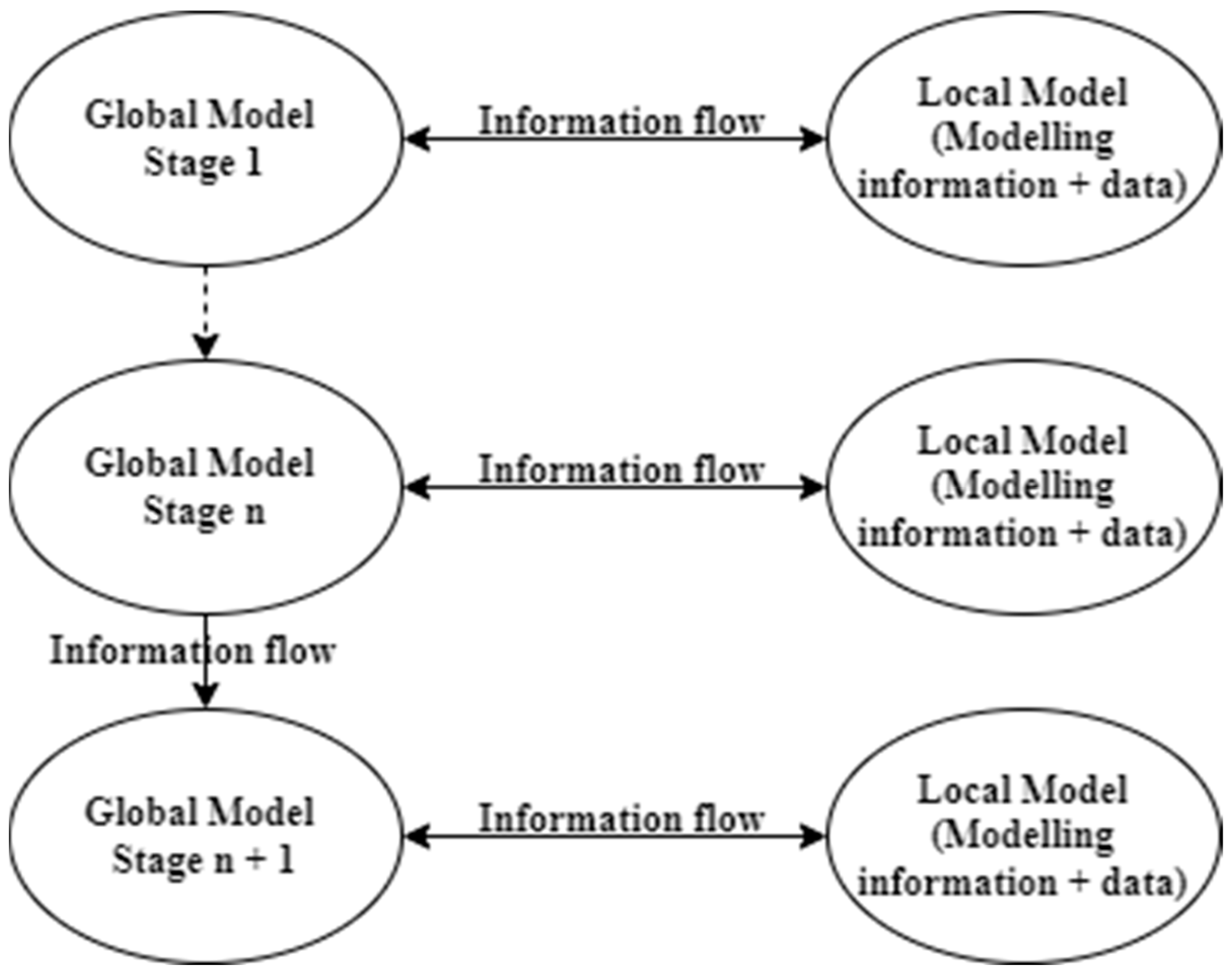
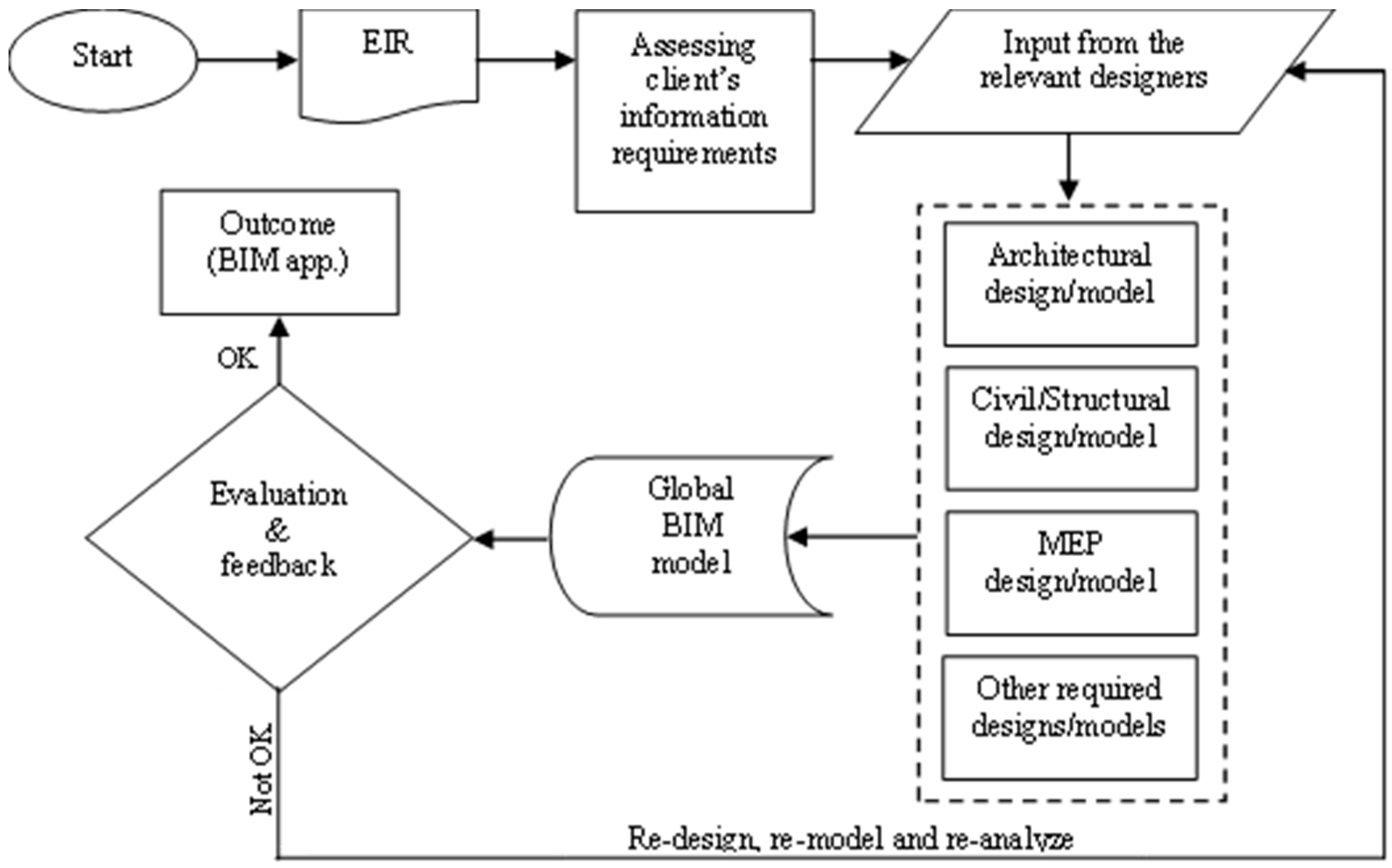
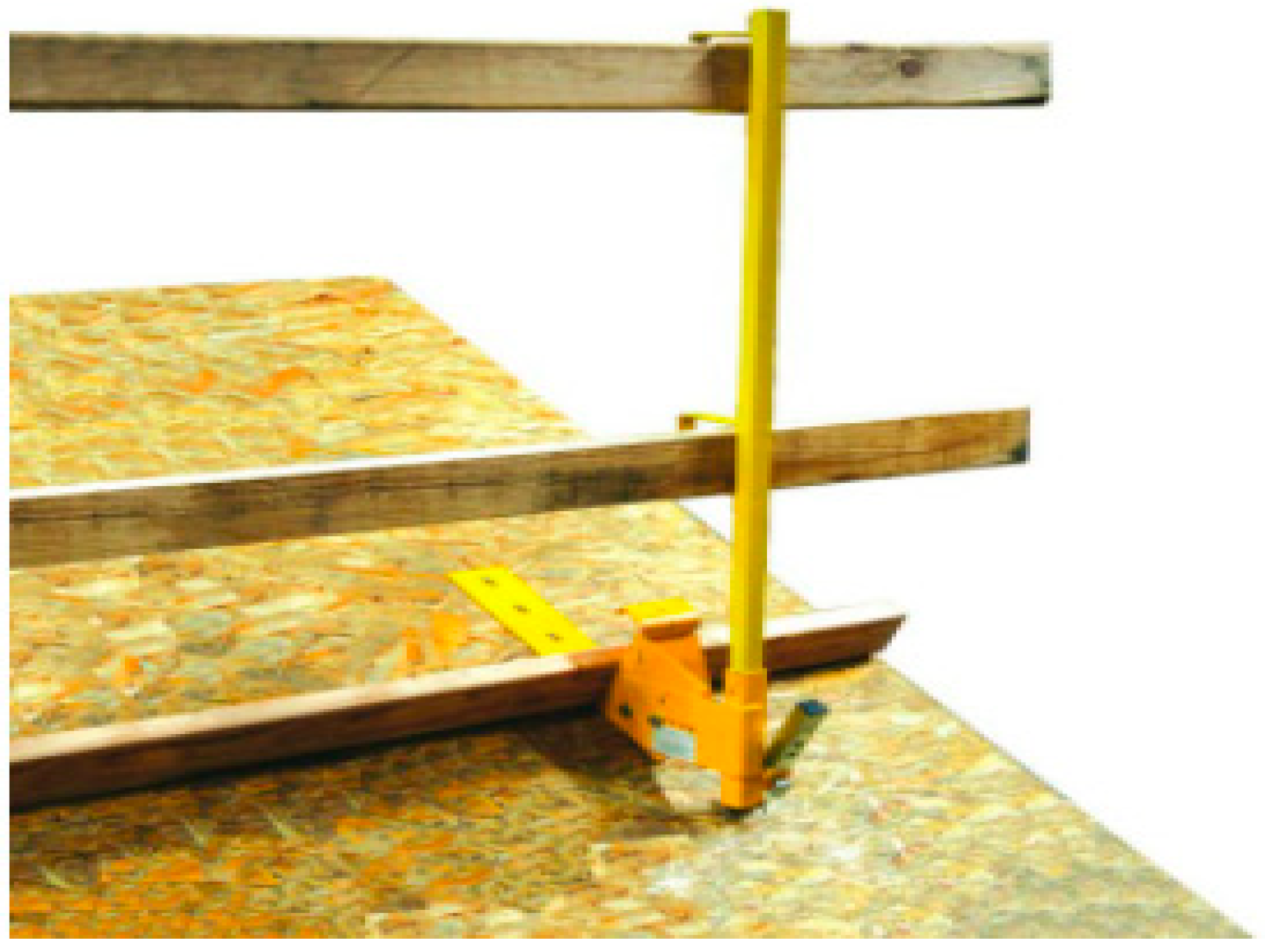
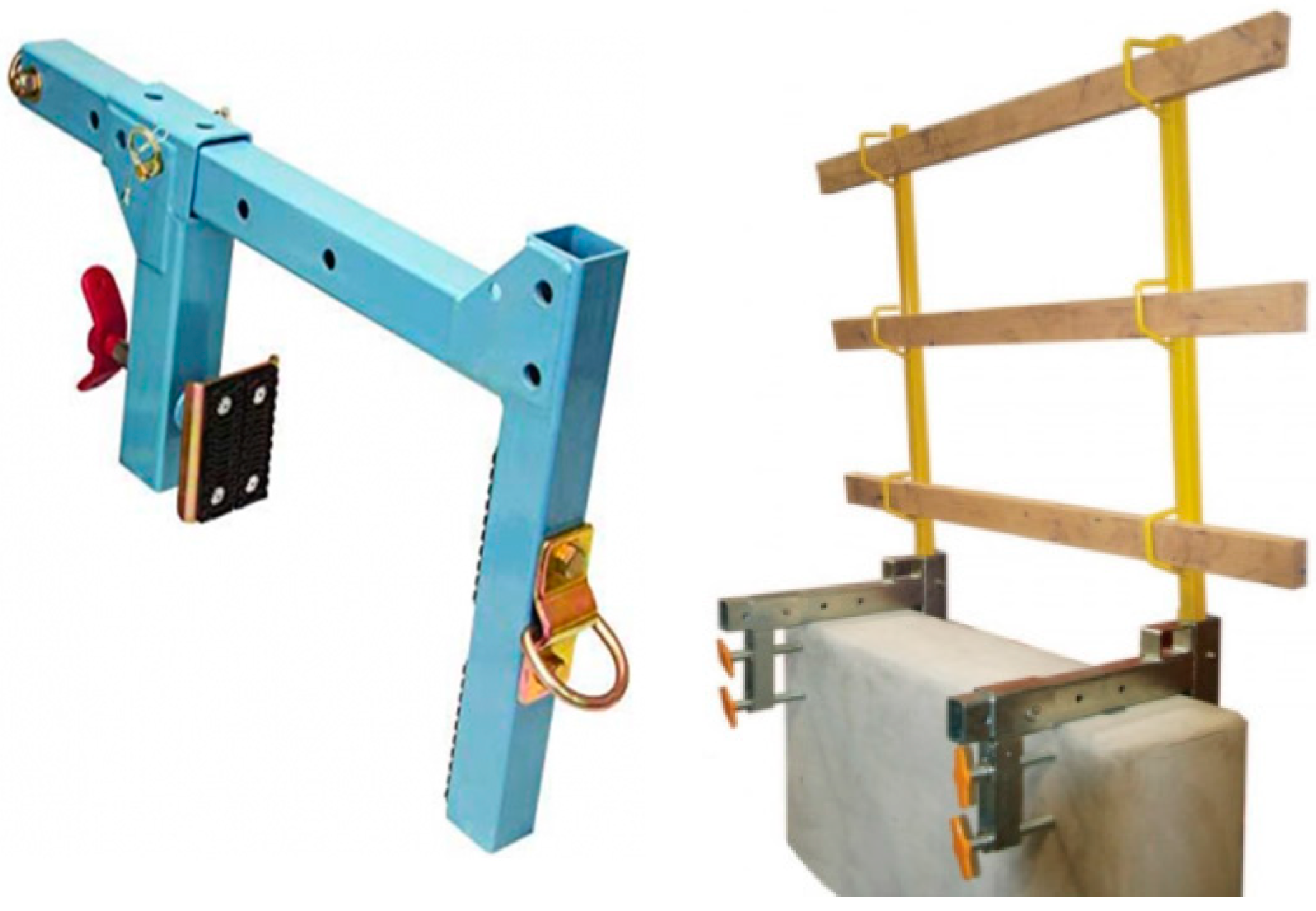

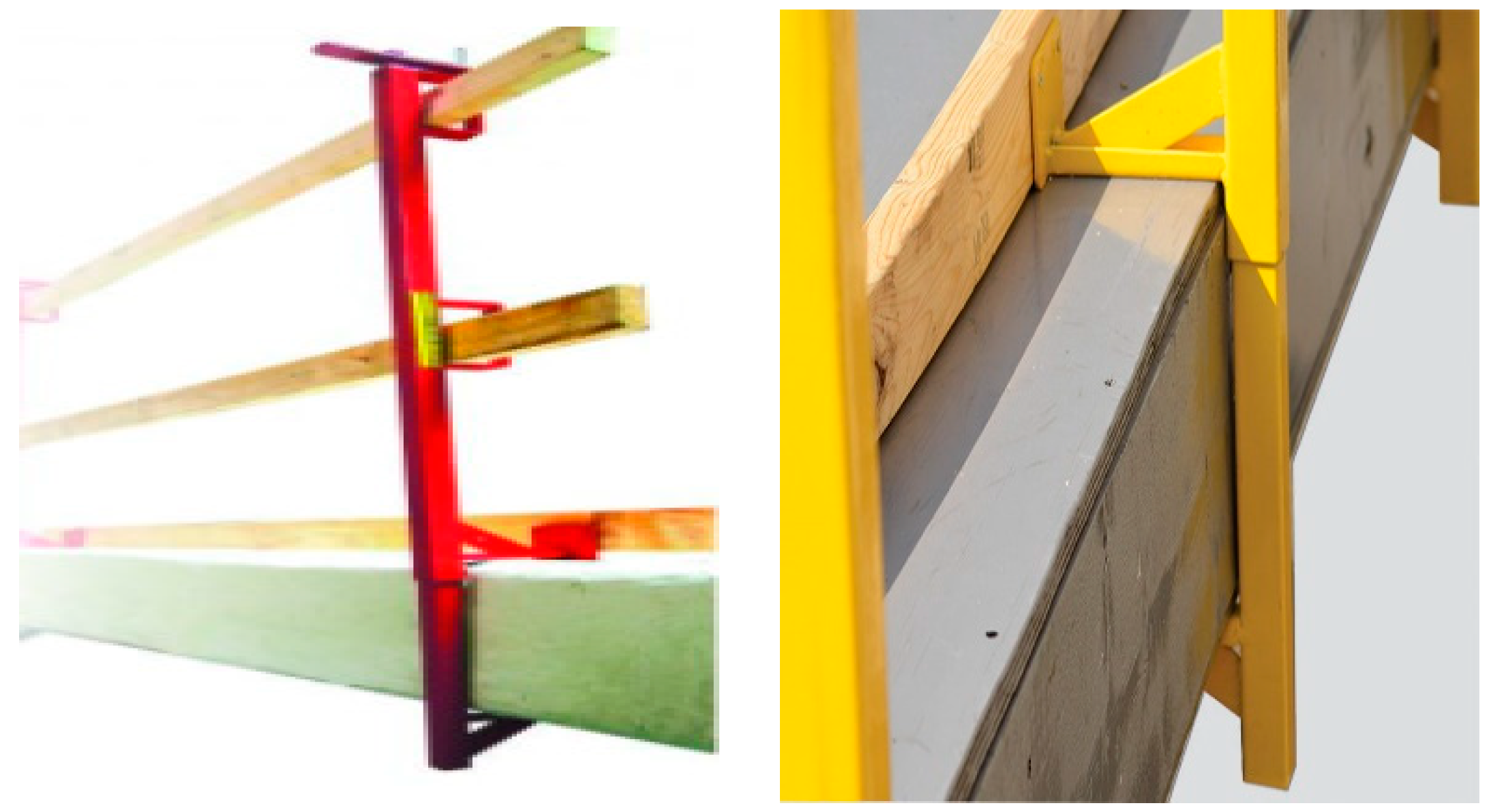
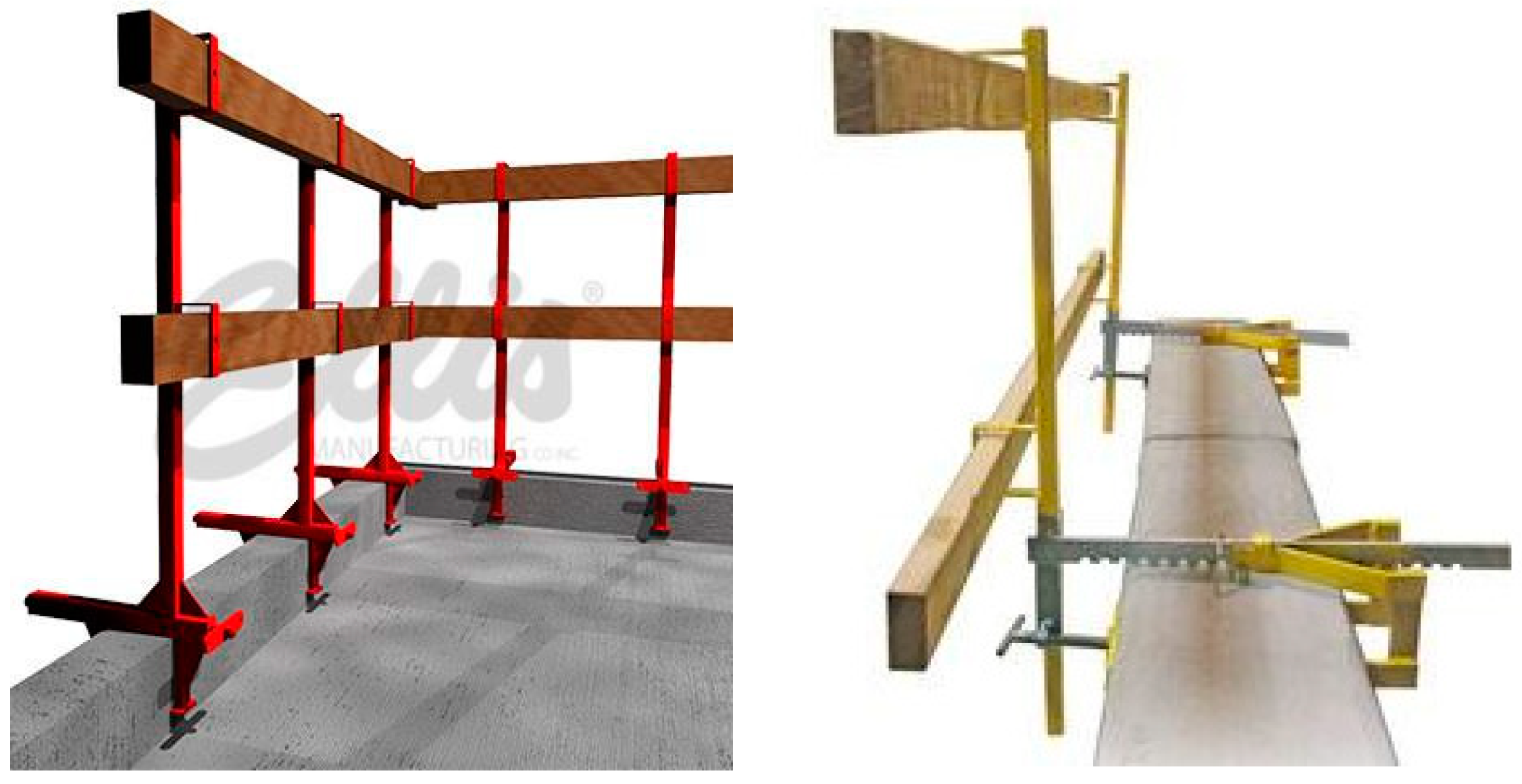
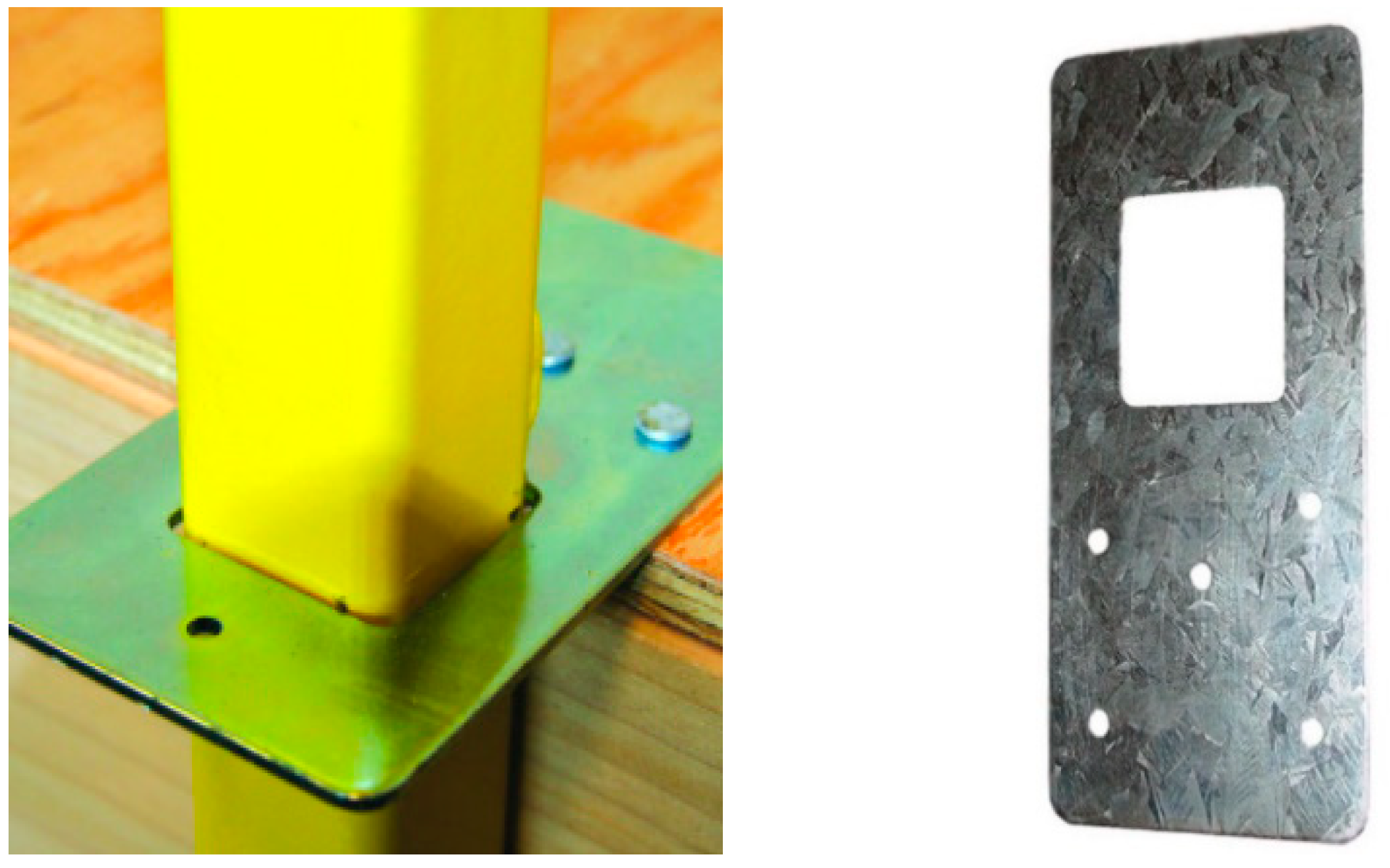
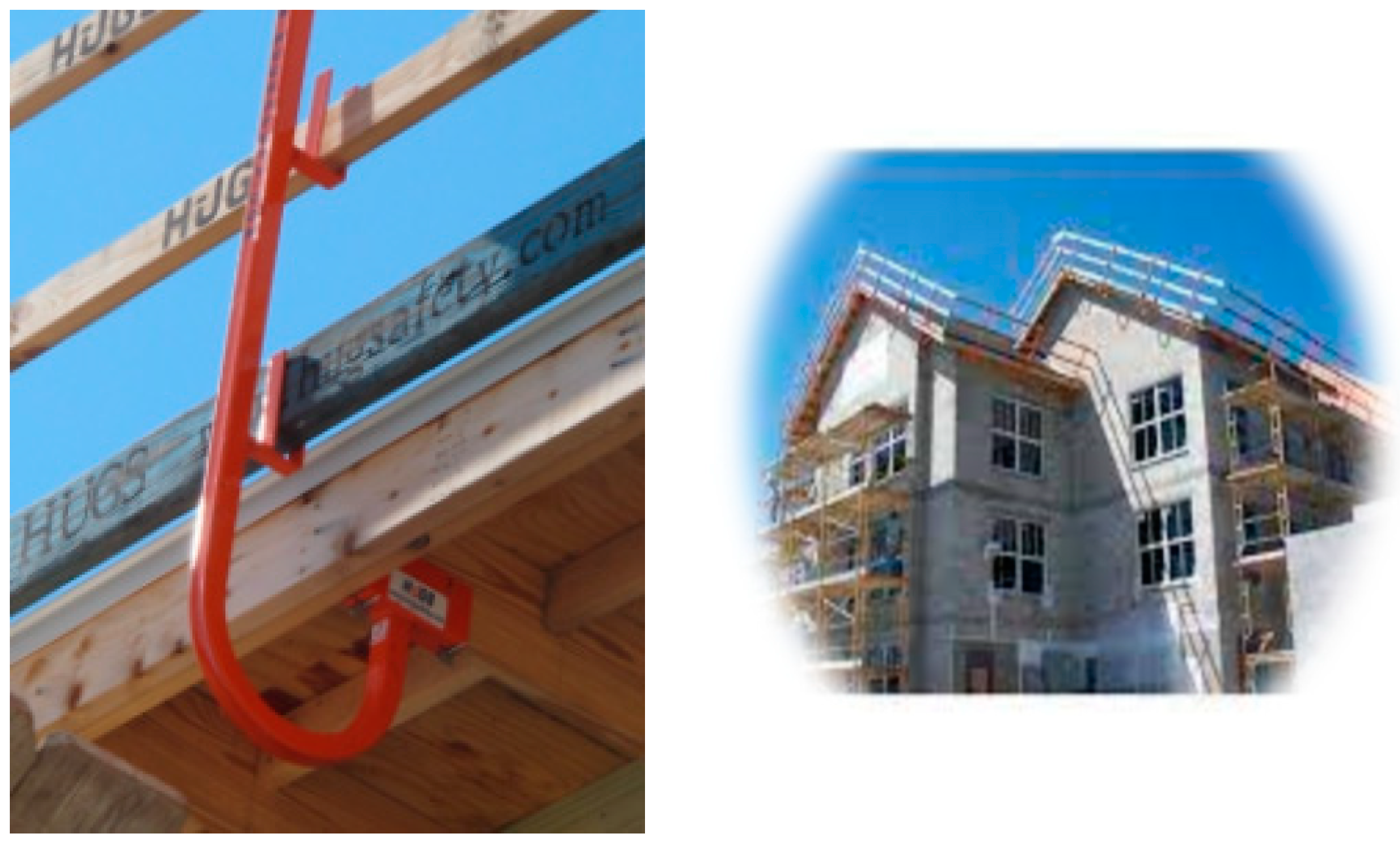

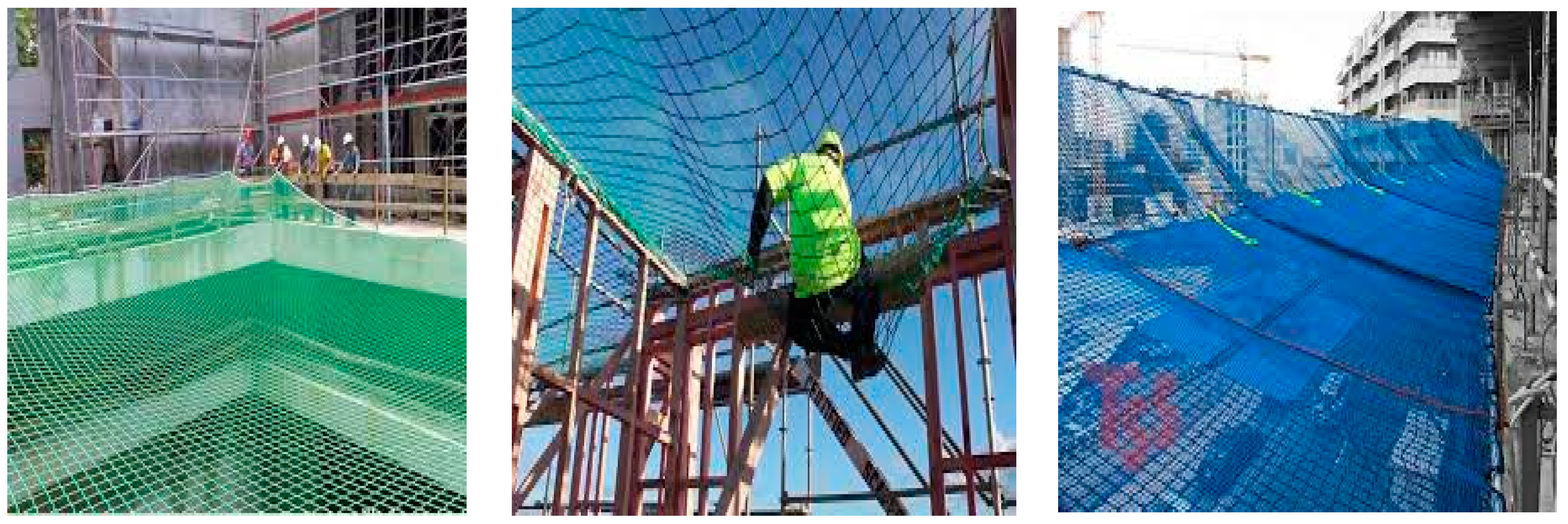
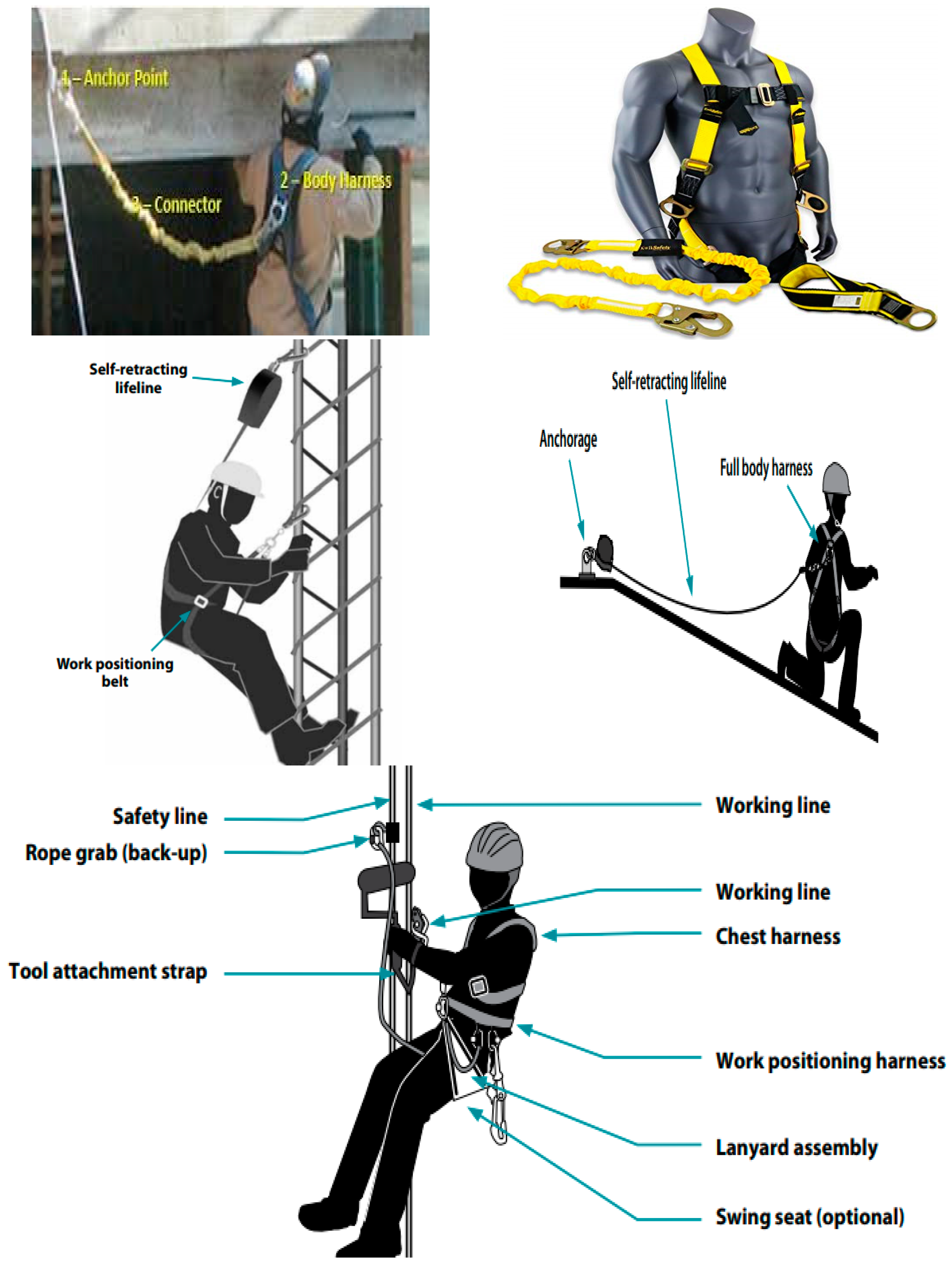
| S/No | Application | Brief Description | References |
|---|---|---|---|
| 1 | Existing conditioning modelling | Is a procedure in which a project team generates a 3D model of the existing site circumstances using BIM modelling software, 3D laser scanning tools, and traditional surveying equipment, among others. | [46,47] |
| 2 | 3D presentation | BIM 3D presentations provide a realistic representation of the future building or structure, project cost, detailed information, and the quality and quantity of the objects, materials, or services that comprise the building or facility. | [48] |
| 4 | Planning and scheduling | This determines the sequences, time, prices, materials, human resources, equipment, or machines required to create, renovate, or demolish a building or structure. BIM allows for the integration of information from planning and scheduling into a 3D interactive model, resulting in a 4D or nD model. | [49,50] |
| 5 | Design and analysis of the design options | Throughout the project life cycle, this enables visualization, helping the study of design alternatives and the analysis of data. The ability of BIM-based technologies to examine multiple design alternatives to select the optimal solution during the pre-construction stage promotes project team communication and collaboration. They can also enable users to retrieve, synthesize, and compute data in a real-world setting and compare options. | [51,52,53] |
| 6 | Cost estimation and quantity take-off | These are performed during the pre-construction stage to assess whether the project cost is within the specified budget to avoid adjustments throughout the construction phase. Accurate cost calculations are instant with a BIM-based tool if the required data is incorporated into the model with minimal effort and time. | [54,55] |
| 7 | Site analysis | This is one of the most valuable and essential ways to establish a complete framework to aid in the most acceptable design selections. It is accomplished by examining the features of a proposed site with BIM modelling software, geographic information system (GIS), drones, and other related tools to establish the best site location for future development. | [56,57] |
| 8 | Energy simulation, also known as energy modelling | This is a computer-based, systematic procedure used to evaluate the energy performance of a building or facility and make it more energy efficient by modifying its design before construction. | [58] |
| 9 | Other performance simulations | Analyses of lighting, daylighting, heating, ventilation, and air conditioning (HVAC), sun and shadow patterns, airflow, carbon footprints, solar radiation, and sustainability performance are just a few examples. | [59,60,61,62] |
| Type of hazard | Hole or opening |
| Consequences | Trip, fall, falling of construction objects or materials |
| Standards | Occupational Safety and Health Administration (OSHA), (1926.502(i)) Department of Safety and Health (DOSH)—Malaysia, (JKKP DP/G 127/379/4-35: MARCH 2007, Section 3) |
| Size | Two inches (i.e., about 0.05 m) or more horizontally in either direction on a floor, roof, or walking/working surface |
| Condition | If the hole or opening is 1.8 m (6 ft) above the ground |
| Preventive measures | Use cover if the opening is 0.05, but not more than 0.25 m; otherwise, use guard rails or safety nets. |
| Load | The cover should be sturdy and durable to support at least a 90 kg load for building construction. However, the load estimate depends on the vehicle’s axle loads for road construction. |
| Material | The cover is usually made of flat wood or metal capable of vertically carrying at least 90 kg load. |
| Color code | The cover should be labeled as a hazard with a recognizable color. |
| Cost of metal cover | Cost of metal cover per 0.25 m2 = 11.500$ Cost of transportation (10–15% of the initial cost) = 1.725$ Cost of installation/uninstallation (30–50% of the initial cost) = 5.750$ Total cost to cover 0.25 m × 0.25 m hole = 18.975$ |
| Cost of wooden cover | Cost of wooden cover per 0.25 m2 = 8.070$ Cost of transportation (10–15% of the initial cost) = 1.211$ Cost of installation/uninstallation (30–50% of the initial cost) = 4.035$ Total cost to cover 0.25 m × 0.25 m hole = 13.316$ |
| Procedure | The cover should be at least twice the size of the hole or opening and be placed at the center, secured from any displacement. |
| Type of hazard | Edge of a structure or scaffold or roof or hole or opening, working at height |
| Consequences | The trip, fall from height |
| Standards | Occupational Safety and Health Administration (OSHA), (1926.502(b)) Department of Safety and Health (DOSH)—Malaysia, (JKKP DP/G 127/379/4-35: MARCH 2007, section 3 & 5) |
| Size | The height of the guardrail should be at least 0.9 m or 1.1 m. Top rails and mid-rails should have a nominal diameter or thickness of at least one-quarter inch (0.6 cm) to avoid cuts and lacerations. |
| Condition | If the edge is 1.8 m (6 ft) above the ground |
| Preventive measures | Guardrails or handrails are required once the height of any task is 1.8 m or more so long as the area is large enough to use them. |
| Load | Guardrail systems must withstand a weight of at least 90 kg that is put on them in any direction and at any point along the leading edge. Additionally, the guardrail’s top edge shall not deflect below 1.0 m above the walking/working level when the load is applied downward. However, the mid-rail should withstand a load of 68 kg in any direction, irrespective of the materials used. |
| Material | Guardrails are usually made of wood, metal (round pipe—alloy steel), manila, plastic, or synthetic rope capable of withstanding at least 90 kg load when applied horizontally. |
| Color code | The guardrails should be labeled as a hazard with high-visibility materials. |
| Cost (Type A) | Cost of wood (2 × 4) per 2.44 m × 3 = 216.00$ Cost of Ultra-Adjust Roof Bracket × 2 = 339.56$ Cost of transportation (10–15% of the initial cost) = 83.33$ Cost of installation/uninstallation (30–50% of the initial cost) = 277.78$ Total cost = 916.674$ |
| Cost (Type B) | Cost of wood (2 × 4) per 2.44 m × 3 = 216.00$ Cost of Guardian Parapet Anchor System × 2 = 883.06$ Cost of transportation (10–15% of the initial cost) = 164.86$ Cost of installation/uninstallation (30–50% of the initial cost) = 549.53$ Total cost = 1813.45$ |
| Cost (Type C) | Cost of wood (2 × 4) per 2.44 m × 3 = 216.00$ Cost of wood (4 × 4) per 1.1 m × 2 = 31.77$ Cost of Angel Guardrail Boot × 2 = 81.00$ Cost of transportation (10–15% of the initial cost) = 49.32$ Cost of installation/uninstallation (30–50% of the initial cost) = 164.39$ Total cost = 510.71$ |
| Cost (Type D) | Cost of wood (2 × 4) per 2.44 m × 3 = 216.00$ Cost of C-Slab Grabber × 2 = 160.00$ Cost of transportation (10–15% of the initial cost) = 56.40$ Cost of installation/uninstallation (30–50% of the initial cost) = 188.00$ Total cost = 620.40$ |
| Cost (Type E) | Cost of wood (2 × 4) per 2.44 m × 3 = 216.00$ Cost of Parapet Clamp × 2 = 360.00$ Cost of transportation (10–15% of the initial cost) = 86.40$ Cost of installation/uninstallation (30–50% of the initial cost) = 288.00$ Total cost = 950.40$ |
| Cost (Type F) | Cost of wood (2 × 4) per 2.44 m × 3 = 216.00$ Cost of Metal Gusset System (65” Universal Guardrail Post) × 2 = 118.44$ Cost of transportation (10–15% of the initial cost) = 50.17$ Cost of installation/uninstallation (30–50% of the initial cost) = 167.22$ Total cost = 551.83$ |
| Cost (Type G) | Cost of wood (2 × 4) per 2.44 m × 3 = 216.00$ Cost of HUGS Under-Eave Truss Mounted Guardrail × 2 = 291.18$ Cost of transportation (10–15% of the initial cost) = 76.08$ Cost of installation/uninstallation (30–50% of the initial cost) = 253.59$ Total cost = 836.85$ |
| Procedure | The guardrails are installed at the edge of the slab or hole and secured from any displacement depending on the temporary rail utilised. |
| Type of hazard | Opening or edge, work at height |
| Consequences | Trip, fall, falling of construction objects or materials |
| Standards | Occupational Safety and Health Administration (OSHA), (1926.502(c)) Department of Safety and Health (DOSH)—Malaysia, (JKKP DP/G 127/379/4-35: MARCH 2007, section 7) |
| Size | Each safety net mesh aperture shall not exceed 36 square inches (230 cm) in size or be longer than 6 inches (15 cm) on either side and shall not be longer than 6 inches (15 cm) measured center-to-center of mesh ropes or webbing (15 cm). All mesh crossings shall be fastened to prevent the mesh aperture from enlarging. |
| Conditions |
|
| Preventive measures | Vertically position the safety net to protect against plaster, stone, construction equipment, or other objects that could fall from the scaffolding and injure people or property. Use it horizontally to ensure the protection of the falling workers and prevent construction materials/objects from harming workers underneath. |
| Load | When subjected to an impact load of 180 kg of sand, safety nets should be erected with sufficient clearance to avoid collision with the surface or structures below 750 mm plus or minus 50 mm. A webbing border rope should surround each safety net (or section thereof) with a minimum breaking strength of 22.2 kN |
| Material | Safety nets are flexible plastic nets made of high-density polyethylene (HDPE) raw materials and other similar materials. |
| Color code | The safety nets should be labeled as a hazard with high-visibility materials. |
| Debris/shade/scaffolding safety net | Cost of 3.048 m × 6.096 m net = 227.50$ Cost of 6 mm (minimum breaking strength = 5.00 kN, safe load = 211.08 kg) rope per 20 linear meters = 11.60$ Cost of transportation (10–15% of the initial cost) = 35.87$ Cost of installation/uninstallation (30–50% of the initial cost) = 119.55$ Total cost = 394.52$ |
| Fall protection safety net | Cost of 1.524 m × 3.048 m net = 192.50$ Cost of 25 mm pipe per 12 linear meters = 428.88$ Cost of couplers (12 number) = 37.20$ Cost of safety snap hook (6 number–120 × 11 mm, load capacity = 450 kg) = 15.72$ Cost of 16 mm (minimum breaking strength = 24.80 kN, safe load = 211.08 kg) rope per 20 linear meters = 11.60$ Cost of transportation (10–15% of the initial cost) = 102.89$ Cost of installation/uninstallation (30–50% of the initial cost) = 342.95$ Total cost = 1131.74$ |
| Procedure |
|
| Type of hazard | Hole or opening, work at height |
| Consequences | A trip, falling of construction worker |
| Standards | Occupational Safety and Health Administration (OSHA), (1926.502(d), (e)) Department of Safety and Health (DOSH)—Malaysia, (JKKP DP/G 127/379/4-35: MARCH 2007, section 8) |
| Size |
|
| Condition |
|
| Preventive measures | The connection technique will differ based on whether the worker has a personal fall arrest or is restricted in their work posture and travel. The connection is frequently achieved using a lanyard containing an energy-absorbing material that reduces the energy supplied to the user’s body following a fall. |
| Load |
|
| Material |
|
| Colour code | It does not matter so long as the PFAS components serve the purpose. There are various colours in the market currently. |
| Cost (general fall arrest) | Anchorage = Support structure usually found on-site. Anchorage connector
Connection means
Cost of installation/uninstallation (30–50% of the initial cost) = 999.05$ Total cost = 3296.87$ |
| Cost (work position) | Anchorage = Support structure like a horizontal/vertical reinforcement Body support (full body harness or body belts with D-rings) = 234.38$ Connection means
Cost of installation/uninstallation (30–50% of the initial cost) = 176.79$ Total cost = 583.41$ |
| Cost (restraint) | Anchorage = Support structure Anchorage connector
Connection means
Cost of installation/uninstallation (30–50% of the initial cost) = 783.76$ Total cost = 2586.47$ |
| Cost (Suspension/worker riding system) | Anchorage = Support structure Anchorage connector
Connection means
Cost of installation/uninstallation (30–50% of the initial cost) = 4728.76$ Total cost = 15,604.91$ |
| Cost (ladder climbing) | Anchorage = Support structure Anchorage connector
Cost of transportation (10–15% of the initial cost) = 129.71$ Cost of installation/uninstallation (30–50% of the initial cost) = 432.36$ Total cost = 1426.78$ |
| Cost (retrieval/rescues) | Anchorage = Support structure Anchorage connector
Energy-absorbing or self-retracting lanyard (6-foot, 140 kg) = 220.16$ Cost of transportation (10–15% of the initial cost) = 1336.40$ Cost of installation/uninstallation (30–50% of the initial cost) = 4454.67$ Total cost = 14,700.41$ |
| Procedure |
|
| Group | S/No | Specialization | Level of Education | Years of Working Experience | Years of BIM Experience | Framework Assessment Indicators (FAI) | |||||||
|---|---|---|---|---|---|---|---|---|---|---|---|---|---|
| Overview | Comprehension | Completeness | Assessment | Content | Connection of the Critical Components | Practicality | Recommendation | ||||||
| Industry professionals | 1 | Construction manager | Ph.D. | 10 | 2 | 4 | 4 | 5 | 4 | 4 | 5 | Yes | Yes |
| 2 | Civil engineer | MSc. | 15 | 4 | 5 | 5 | 4 | 5 | 4 | 5 | Yes | Yes | |
| 3 | Structural engineer | MSc. | 15 | 3 | 4 | 4 | 3 | 4 | 4 | 4 | Yes | Yes | |
| 4 | Construction engineer | Diploma | 15 | - | 4 | 4 | 4 | 4 | 4 | 4 | Yes | Yes | |
| 5 | Construction engineer | Diploma | 2 | - | 5 | 3 | 4 | 5 | 4 | 3 | Yes | Yes | |
| 6 | Civil engineer | MSc. | 6 | 2 | 5 | 4 | 4 | 4 | 5 | 4 | Yes | Yes | |
| 7 | Construction manager | Diploma | 13 | - | 3 | 4 | 4 | 4 | 3 | 4 | Yes | Yes | |
| 8 | Construction project manager | Ph.D. | 15 | 7 | 5 | 4 | 4 | 5 | 5 | 4 | Yes | Yes | |
| 9 | Safety and health officer | MSc. | 6 | 2 | 5 | 4 | 4 | 4 | 4 | 4 | Yes | Yes | |
| 10 | Safety and health officer | MSc. | 4 | - | 5 | 4 | 5 | 5 | 5 | 5 | Yes | Yes | |
| 11 | Civil engineer | MSc. | 10 | 5 | 4 | 4 | 4 | 4 | 4 | 4 | Yes | Yes | |
| Mean score | 4.45 | 4.00 | 4.09 | 4.36 | 4.18 | 4.18 | |||||||
| Academics | 1 | Geotechnical engineer | MSc. | 8 | - | 5 | 4 | 5 | 5 | 5 | 5 | Yes | Yes |
| 2 | Construction manager | Ph.D. | 8 | 1 | 5 | 5 | 5 | 5 | 5 | 5 | Yes | Yes | |
| 3 | Civil engineer | MSc. | 3 | - | 3 | 4 | 5 | 4 | 5 | 5 | Yes | Yes | |
| 4 | Process simulation engineer | Ph.D. | 7 | - | 4 | 5 | 3 | 4 | 4 | 4 | Yes | Yes | |
| 5 | Civil Engineer | MSc. | 8 | 3 | 5 | 4 | 4 | 5 | 5 | 4 | Yes | Yes | |
| 6 | Geotech engineer | MSc. | 3 | 2 | 3 | 3 | 4 | 3 | 4 | 3 | Yes | Yes | |
| 7 | Water resources and environmental engineer | Ph.D. | 12 | 4 | 4 | 4 | 5 | 4 | 4 | 5 | Yes | Yes | |
| 8 | Civil engineer | MSc. | 8 | 1 | 5 | 4 | 5 | 4 | 5 | 4 | Yes | Yes | |
| Mean score | 4.25 | 4.12 | 4.50 | 4.25 | 4.63 | 4.38 | |||||||
| Overall mean score | 4.37 | 4.05 | 4.26 | 4.32 | 4.37 | 4.26 | |||||||
| FAI1 | FAI2 | FAI3 | FAI4 | FAI5 | FAI6 | |
|---|---|---|---|---|---|---|
| Kruskal–Wallis H | 18.000 | 18.000 | 18.000 | 18.000 | 18.000 | 18.000 |
| Degree of freedom (df) | 18 | 18 | 18 | 18 | 18 | 18 |
| Asymp. Sig. | 0.456 | 0.456 | 0.456 | 0.456 | 0.456 | 0.456 |
Publisher’s Note: MDPI stays neutral with regard to jurisdictional claims in published maps and institutional affiliations. |
© 2022 by the authors. Licensee MDPI, Basel, Switzerland. This article is an open access article distributed under the terms and conditions of the Creative Commons Attribution (CC BY) license (https://creativecommons.org/licenses/by/4.0/).
Share and Cite
Rafindadi, A.D.; Shafiq, N.; Othman, I. A Conceptual Framework for BIM Process Flow to Mitigate the Causes of Fall-Related Accidents at the Design Stage. Sustainability 2022, 14, 13025. https://doi.org/10.3390/su142013025
Rafindadi AD, Shafiq N, Othman I. A Conceptual Framework for BIM Process Flow to Mitigate the Causes of Fall-Related Accidents at the Design Stage. Sustainability. 2022; 14(20):13025. https://doi.org/10.3390/su142013025
Chicago/Turabian StyleRafindadi, Aminu Darda’u, Nasir Shafiq, and Idris Othman. 2022. "A Conceptual Framework for BIM Process Flow to Mitigate the Causes of Fall-Related Accidents at the Design Stage" Sustainability 14, no. 20: 13025. https://doi.org/10.3390/su142013025
APA StyleRafindadi, A. D., Shafiq, N., & Othman, I. (2022). A Conceptual Framework for BIM Process Flow to Mitigate the Causes of Fall-Related Accidents at the Design Stage. Sustainability, 14(20), 13025. https://doi.org/10.3390/su142013025







